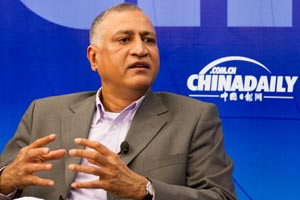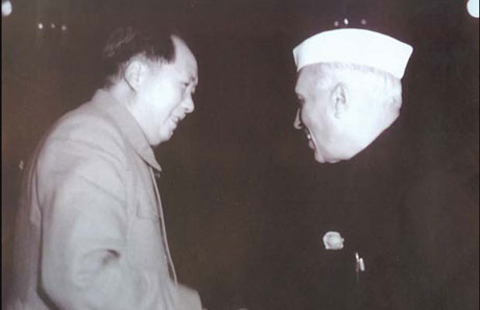Modi can truly make it the Visit India Year
Updated: 2015-05-14 07:43
By Ravi Shankar (China Daily)
Comments Print Mail Large Medium SmallThis year, China is marking the Visit India Year.
In India, during a recent, prolonged trip, I saw scant evidence of it.
For good reason. According to one estimate, of the 800,000 trips between China and India, Indians outnumber the Chinese three to one.
 |
|
Ravi Shankar Narasimhan is an Indian expert and executive editor of China Daily's overseas editions. |
And travel to China has become so common that in the last three weeks, I got a call from my brother in Texas to meet up with a good friend of his who was visiting Beijing; and my sister in Namibia called to say hello to her Indian neighbors who had come to Foshan, Guangdong province, to visit their son.
But in my office, full of highly educated and well-traveled people, I have not found a single person who has gone to India for anything apart from business.
So why the (mainly) one-way traffic?
It's not deliberate. The average middle-class Indian who started traveling abroad at the turn of the century typically chose Southeast Asian countries for their first ventures abroad, followed by Europe and other Western destinations. (The US is another matter, for there are so many Indians living there it was more of a family reunion. Ditto the Chinese.)
In more than a decade of living in China, I have noticed a similar trajectory.
The first major destinations for Chinese mainlanders were Hong Kong and Macao. This was followed by Southeast Asia, Europe and Australia.
But then their paths diverged. Indian tourists discovered China, an "exotic" place with stunning scenery and breathtaking historical sites - far better preserved than in their homeland. Ergo, a Chinese immigration stamp has become necessary as part of travel bragging rights.
The Chinese were no different but they found India "too exotic" and "difficult" - the former code for poor tourist infrastructure and safety and the latter the simple task of obtaining a visa.
India has a tourism brand ambassador in the form of Prime Minister Narendra Modi, who begins his three-day visit to China in the ancient city of Xi'an on Thursday, and can address both the concerns.
He made a good start by opening a Sina Weibo (the Chinese equivalent of Twitter) account to greet the Chinese.
He can promise better tourist facilities and safety for women (as more than one weibo user demanded).
Better still, he can promise that the Chinese will be eligible for the equivalent of visas on arrival, making it much easier to visit his country.
After all, he starts his visit to a place from where the famous Tang Dynasty (AD 618-907) monk Xuanzang began his epic and arduous journey to India that framed a civilizational exchange.
Surely, it should be easier today.
Contact the writer at ravi@chinadaily.com.cn



